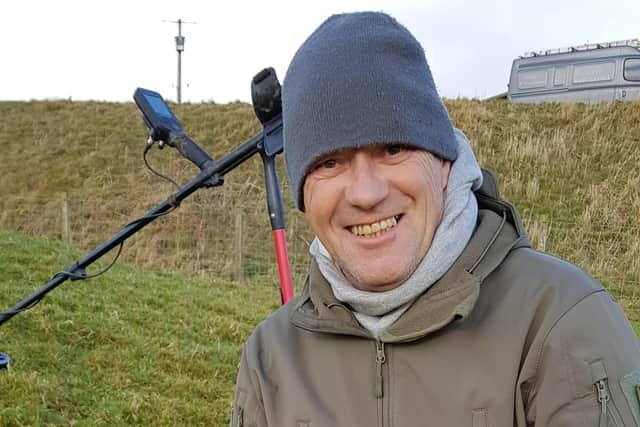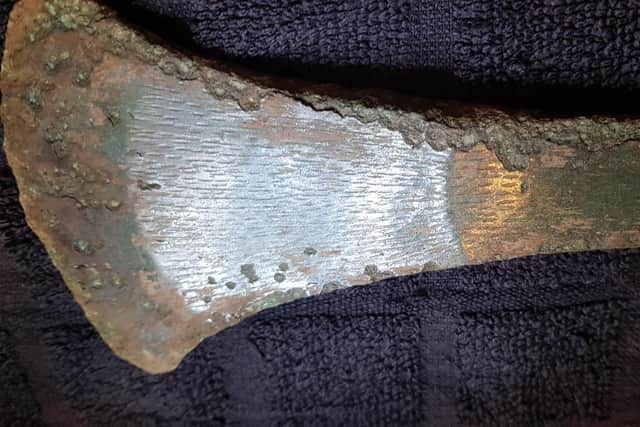Metal detectorist's 'find of a lifetime' after Bronze Age discovery at secret Scottish location
A metal detectorist has described the moment he found a patterned Bronze Age axe head deep in the soil and said the discovery was the “find of a lifetime”.
Christopher Squires came across the ancient object in a field in the Central Belt and said he was so moved by the discovery that he possibly left another one behind at the search spot.
Advertisement
Hide AdAdvertisement
Hide AdMr Squires, 62, a retired plastics machinist, said he could not reveal the location of the find, with the axe head due to be handed into the Treasure Trove Unit tomorrow where research into the object will take place.


The detectorist, from Thankerton in South Lanarkshire, found the axe head after joining a friend on a search of new ground in the Central Belt following a “few dreadful days” of solo detecting in rain.
He said: "It is a once-in-a-lifetime find, you really don't find these things every day. It is like finding a box full of gold coins, it is that sort of find.
"I am talking about it now and the hairs are standing up on the back of my neck. When you hold something like that you are not thinking of the cold, you don’t realise it is raining and you don’t know you are covered in mud. For a few moments, it feels just fantastic. That is what I love about the hobby.


“The pattern has been made from hammering. It is so intricate that it is as if it has been machined in a modern machine shop. It is pretty special.”
Mr Squires said he was so excited by the find that he “broke the first rule of metal detecting" and didn’t check the hole for further items. Photographs clearly show another object embedded in the earth, which he is due to retrieve.
He said he believed he may have found a site of national importance given the style of the axe head and Lidar maps, which highlighted mounds, circles and a path deeply embedded in the landscape.
Mr Squires said his own research found only two other Bronze Age axes of the same style – one from England and the other found near Bonar Bridge in Sutherland.
Advertisement
Hide AdAdvertisement
Hide AdA surge in popularity of metal detecting, which intensified over the Covid pandemic, has led to a significant rise in the number of finds being made.
In 2019, a total of1,551 finds were received by the Treasure Trove Unit (TTU), which decides whether the ‘ownerless property” is claimed by the Crown and offered to museum collections. More than 5,000 items were received by the unit last year, with three extra staff brought in to deal with the volume of cases.
A spokesperson for the Treasure Trove Unit said: “Metal detected finds have contributed greatly to our understanding of the Scottish archaeological record, and it is important that all archaeological finds are reported to the Treasure Trove Unit.
"As metal detecting grows in popularity, it is important that people taking up the hobby are aware of both their legal responsibilities and the importance of their finds to Scotland's rich archaeological heritage. Raising awareness of these alongside our partners in the wider heritage sector is an important aspect of the work of the TTU."
Comments
Want to join the conversation? Please or to comment on this article.
